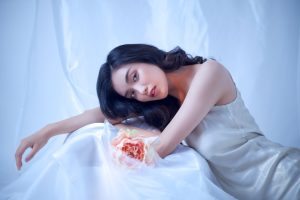Introduction
Natural light is essential for our health and well-being. It regulates our circadian rhythm, helps us maintain a positive mood, and provides us with vitamin D. However, modern lifestyles often force us to spend the majority of our days indoors, away from the sun. This lack of exposure to natural light can have negative consequences on our health, mood, and productivity. That’s where artificial daylight simulators come in, to provide an artificial source of natural light that can have a positive impact on our lives.
What are Daylight Simulators?
Artificial daylight simulators are electronic devices that reproduce the spectral properties of natural sunlight. They are designed to simulate the natural light that we would experience outside on a sunny day. These devices have a variety of different uses, including in healthcare, office environments, and even personal use at home.
Health Benefits of Daylight Simulators
The use of daylight simulators has several potential health benefits. The human body relies on natural light to maintain its circadian rhythm, which regulates our sleep-wake cycle. Exposure to artificial daylight simulators can help regulate this rhythm, leading to better sleep quality and a more alert and energetic mood during the day.
Daylight simulators can also be used to treat various medical conditions, such as depression, seasonal affective disorder (SAD), and sleep disorders. Studies have found that exposure to bright light therapy can significantly reduce the symptoms of depression and SAD. In one study, bright light therapy was found to be as effective as antidepressants in treating moderate to severe depression.
Productivity Benefits of Daylight Simulators
Artificial daylight simulators have also been found to increase productivity in a variety of settings. Studies have shown that natural light in the workplace can improve employee performance, reduce absenteeism, and increase job satisfaction. When natural light is not available, such as in windowless offices or underground workstations, artificial daylight simulators can simulate its effects and help workers feel more alert and focused.
Types of Daylight Simulators
There are several types of artificial daylight simulators available on the market today. They range from simple light boxes to complex systems that mimic the changing natural light throughout the day.
Light Boxes
Light boxes are the simplest type of daylight simulator. They are essentially boxes that contain several light bulbs that emit bright light in a specific spectrum. Users sit in front of the box for a specified amount of time each day to receive the benefits of the simulated natural light.
Dawn Simulators
Dawn simulators are designed to simulate the gradual changes in natural light that occur in the morning. They produce a dim light initially and gradually increase in intensity as the morning progresses, reaching full brightness at the desired wake-up time. Dawn simulators can help people wake up more easily and naturally, feeling more refreshed and alert.
Dynamic Lighting Systems
Dynamic lighting systems are the most complex type of daylight simulator. They are designed to mimic the changing patterns of natural light throughout the day, from sunrise to sunset. These systems typically use a combination of different types of light sources to create a more natural and dynamic environment. Dynamic lighting systems can have a variety of different applications, from healthcare settings to office environments.
Conclusion
Artificial daylight simulators are a valuable tool for promoting health and productivity, especially in today’s world where natural light is often hard to come by. They can help regulate our circadian rhythm, improve our mood, and increase our productivity at work. With a variety of different types of daylight simulators available, there is sure to be a solution that meets your needs. So why not consider bringing the outdoors in with an artificial daylight simulator today?





More Stories
The Elegance of Spiral Staircase Chandeliers: A Perfect Blend of Form and Function
The Elegance of Sconce Hallways: Illuminating Your Passages with Style
Illuminate Your Space with Adjustable Wall Lights in the UK